
Connections Personas

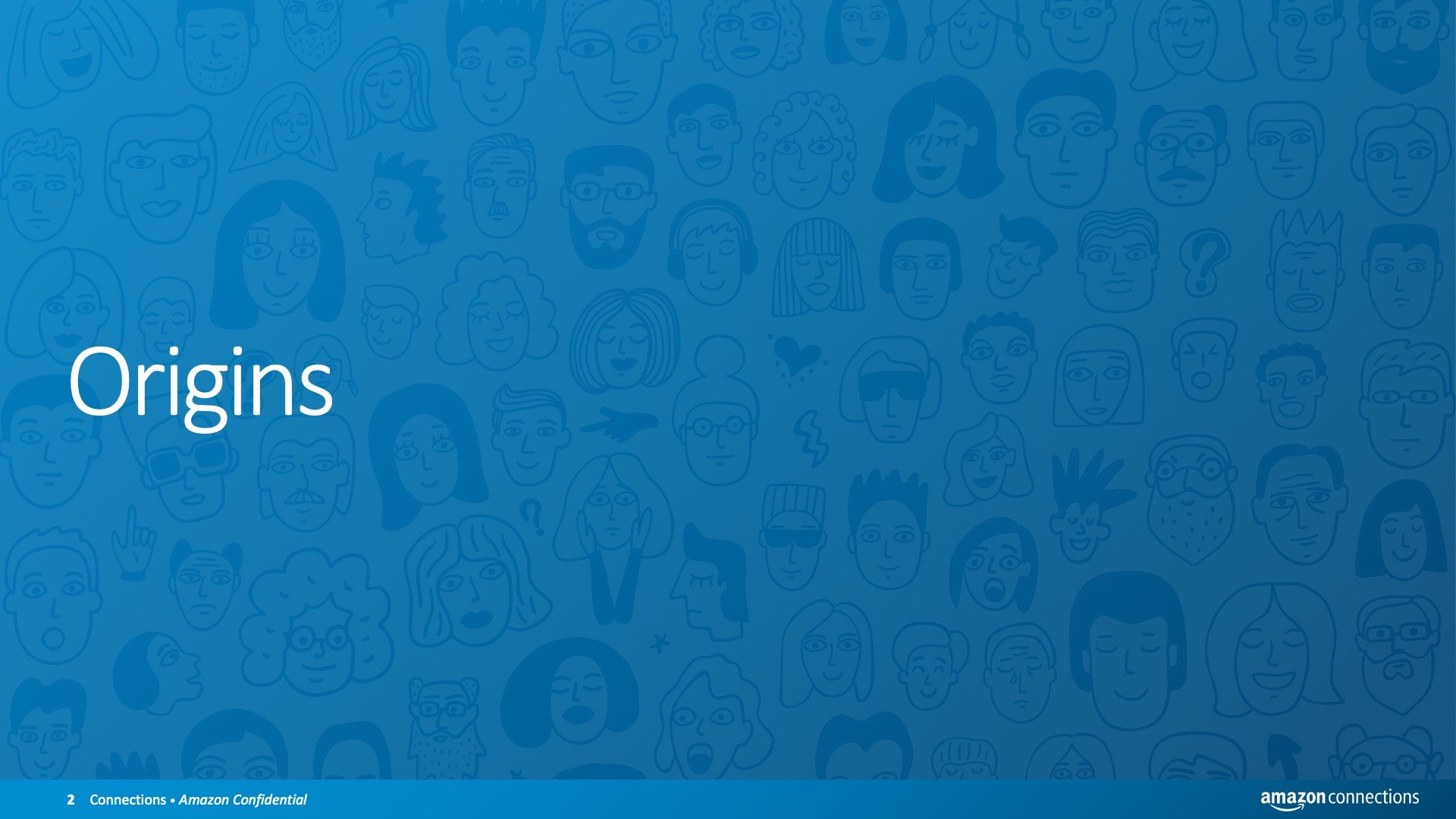

The concept of understanding customer segments as communities with coherent identity was developed in 1993-4 by Angus Jenkinson and internationally adopted by OgilvyOne with clients using the name CustomerPrints as "day-in-the-life archetype descriptions". Creating imaginal or fictional characters to represent these customer segments or communities followed. Jenkinson's approach was to describe an imaginal character in their real interface, behavior and attitudes with the brand. Alan Cooper popularized the methodology in 1998 in his book, “The inmates are running the asylum: why high-tech products drive us crazy and how to restore sanity”.
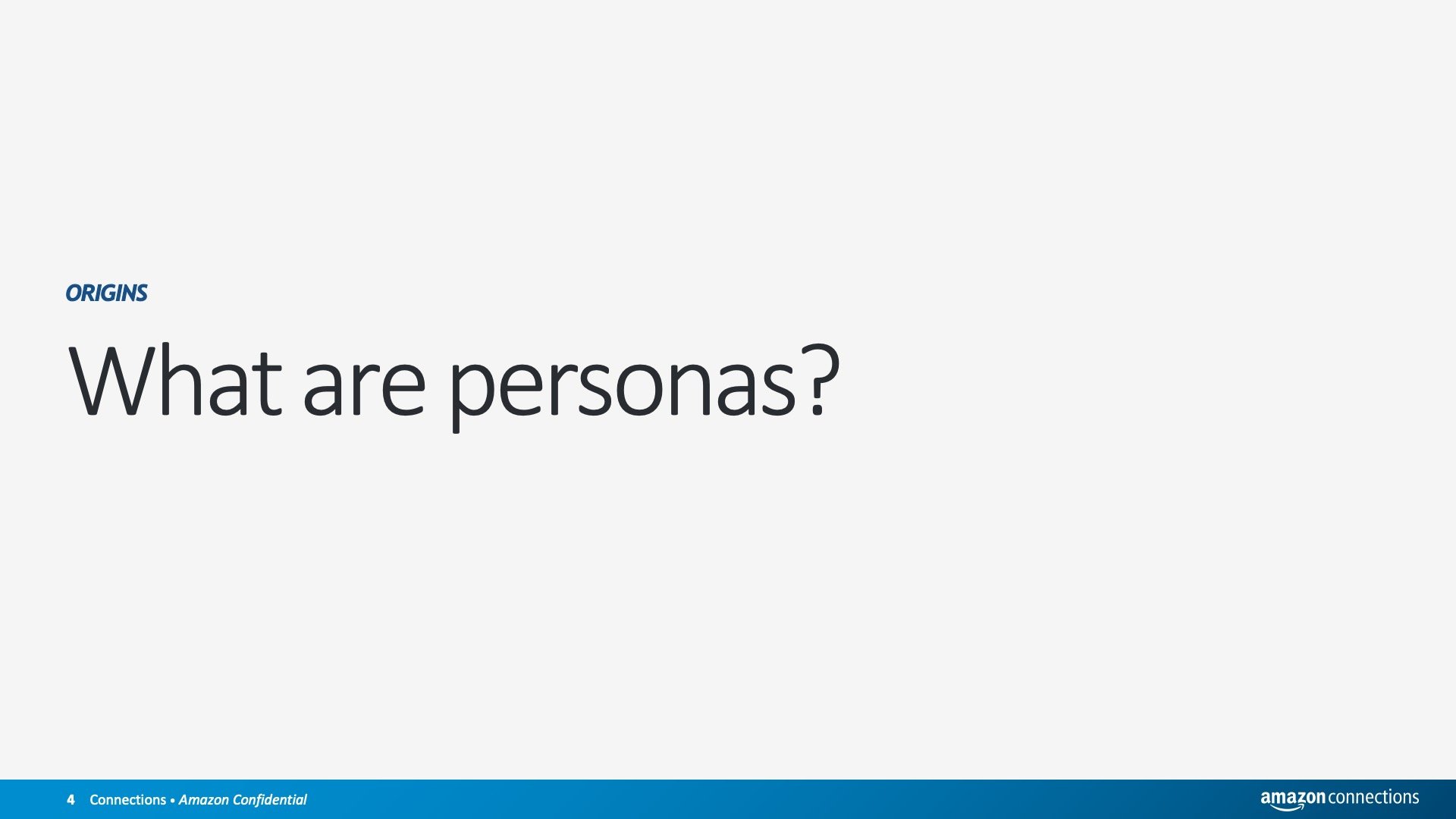
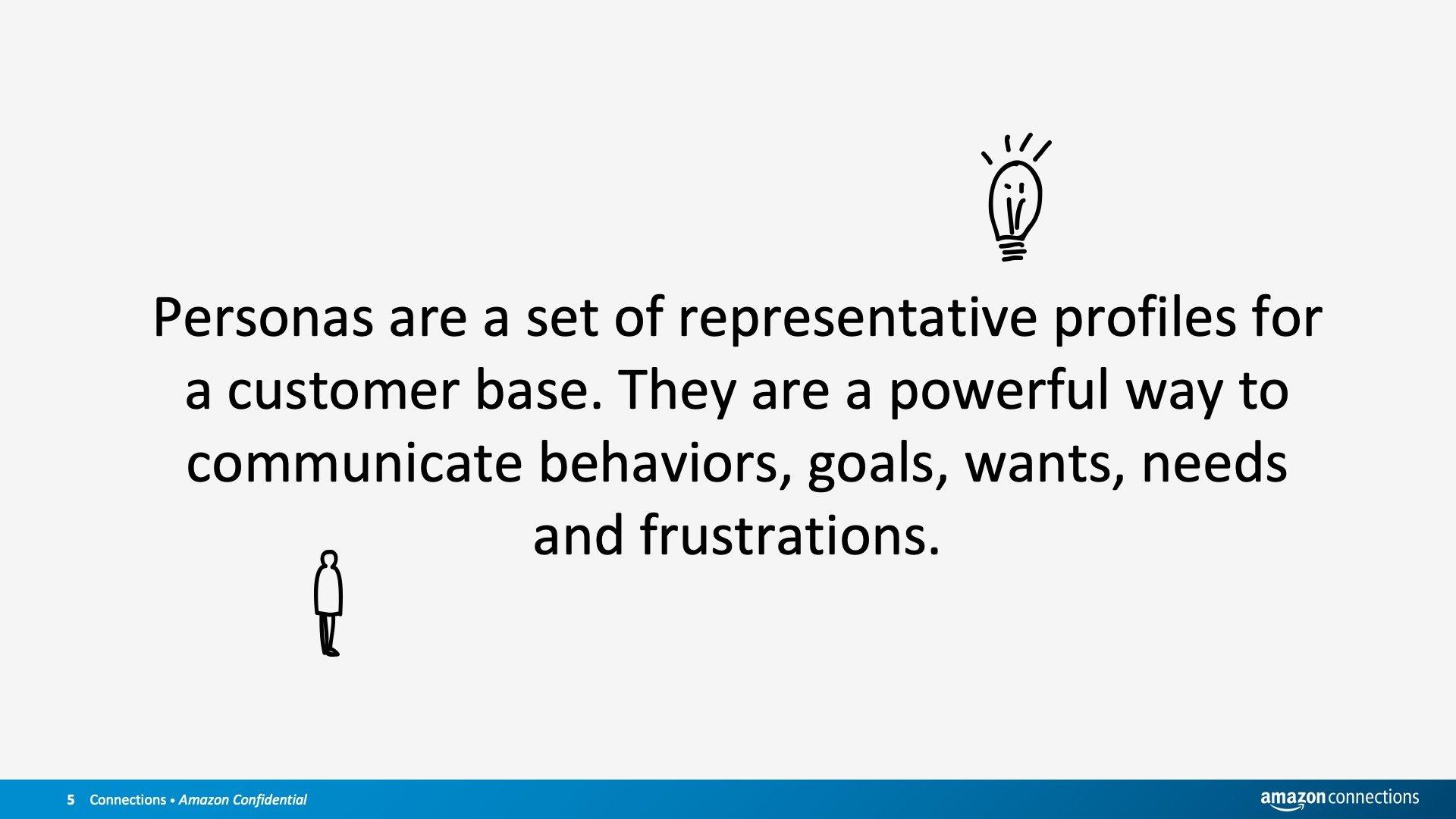
Effective personas are driven by research data and focus on how a particular profile uses a particular application in a given context. Personas are not real people, but they are based on the behaviors and motivations of real customers.

Personas are NOT based on demographics or market segments, derived from gut feelings about our customers, or user profiles or stereotypes – for example, “soccer mom”.


Personas help provide focus for product development. Instead of saying, “this product is for EVERYONE”, personas guide the conversation to become, “what would THIS PERSON need the product to do?”.
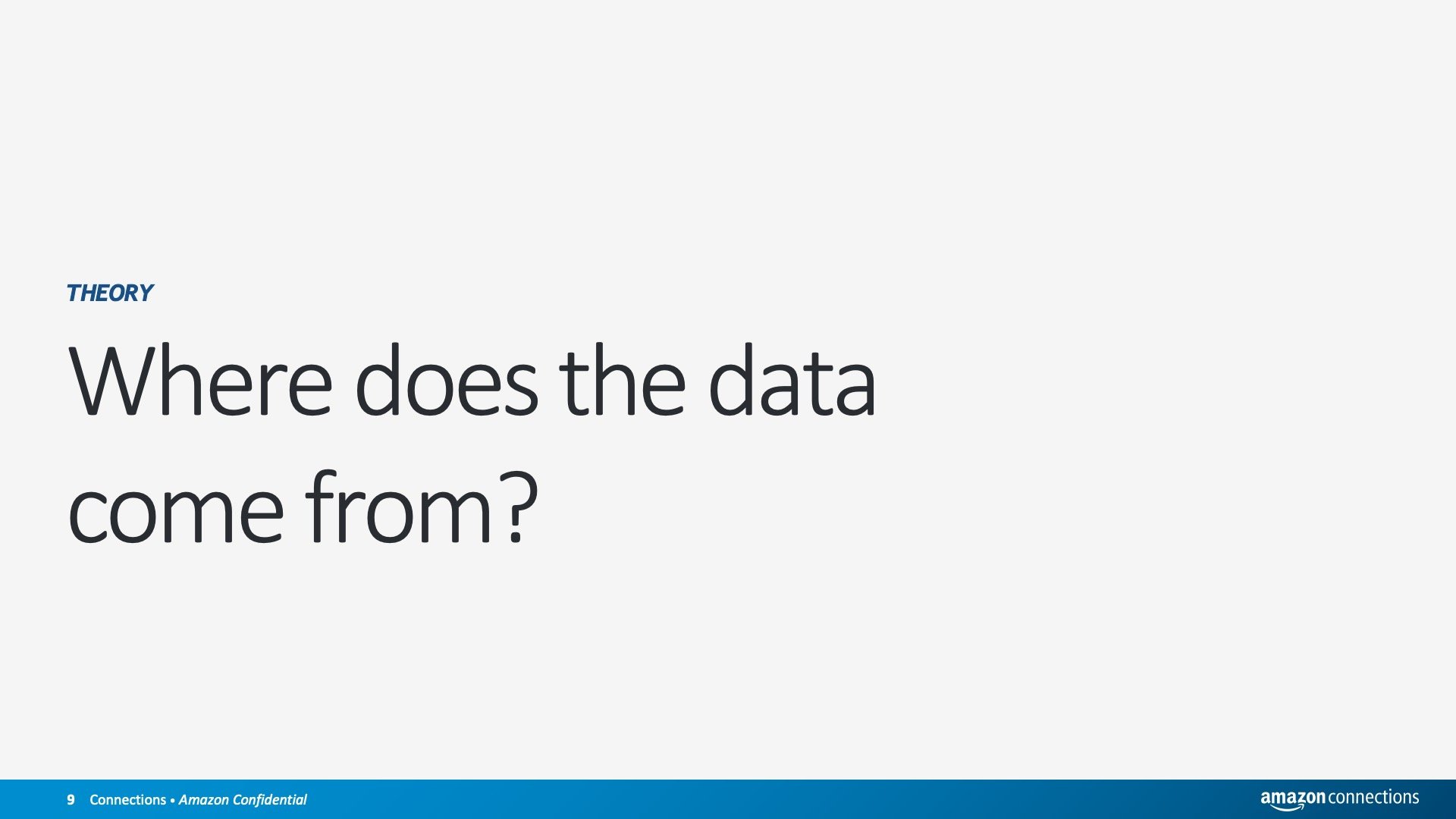

Data can be gathered from customer surveys (easy and inexpensive), focus groups (to gain a collection of ideas from multiple individuals simultaneously), contextual interviews (job shadowing), ethnographic observations to understand customer habits, motivations, their environment, and usage data to provide a baseline.
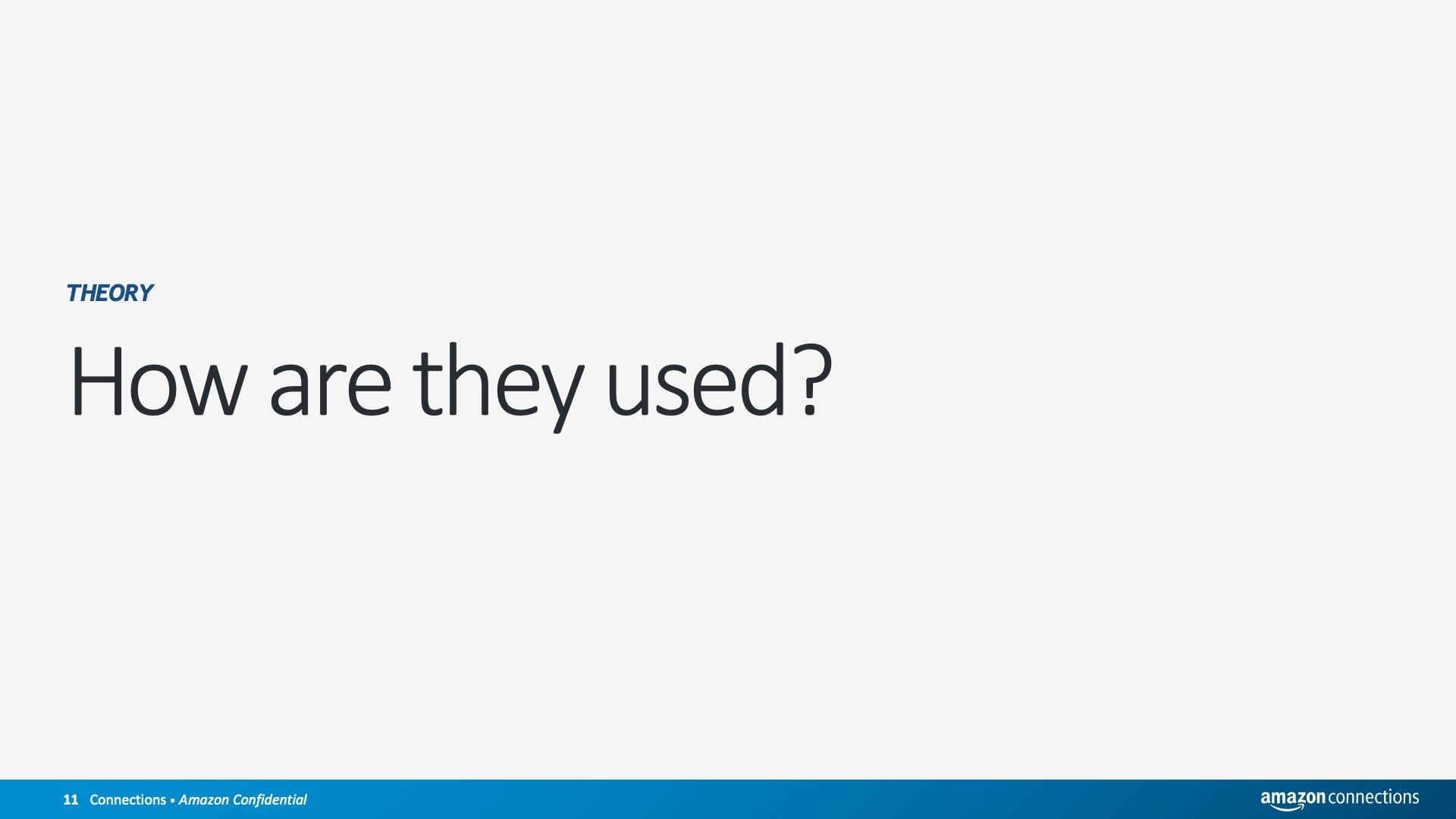

Personas help product and UX teams avoid designing things for themselves, they facilitate ongoing dialogue between people who are building the product and the customers who are actually using the product. They fuel ideation and help prioritize product features and the development process. They also help to anticipate future opportunities and identify areas of value to differentiate from competitors.

Personas are based on real data gathered from customer interviews to create empathy for the teams using them. Using individual ‘real customers’ pigeon holes requirements to whoever is the most vocal instead of a group of customers with similar goals and needs. Personas are not a substitute for ongoing qualitative customer studies or performing other means of usability research, they’re valuable because our customers don’t share the same mental model we have about our product and they’ll likely never interact with the product enough to develop one.


Personas constantly remind product teams about prioritized customer groups and who will receive the most value out of the product. They distill extremely large target segments into a single entity that stakeholders can relate to and understand/empathize with. They provide a focal point for planning and help solve disagreements over product and feature priority decisions. They prevent outside groups from making uninformed or snap decisions.

Knowing our customers helps us make the right product decisions and deliver optimal value. They represent behavior patterns and motivations, NOT job descriptions. There is NOT a direct correlation between personas and market segments. Focus on goals, not tasks – tasks are the things we do to accomplish our goals.
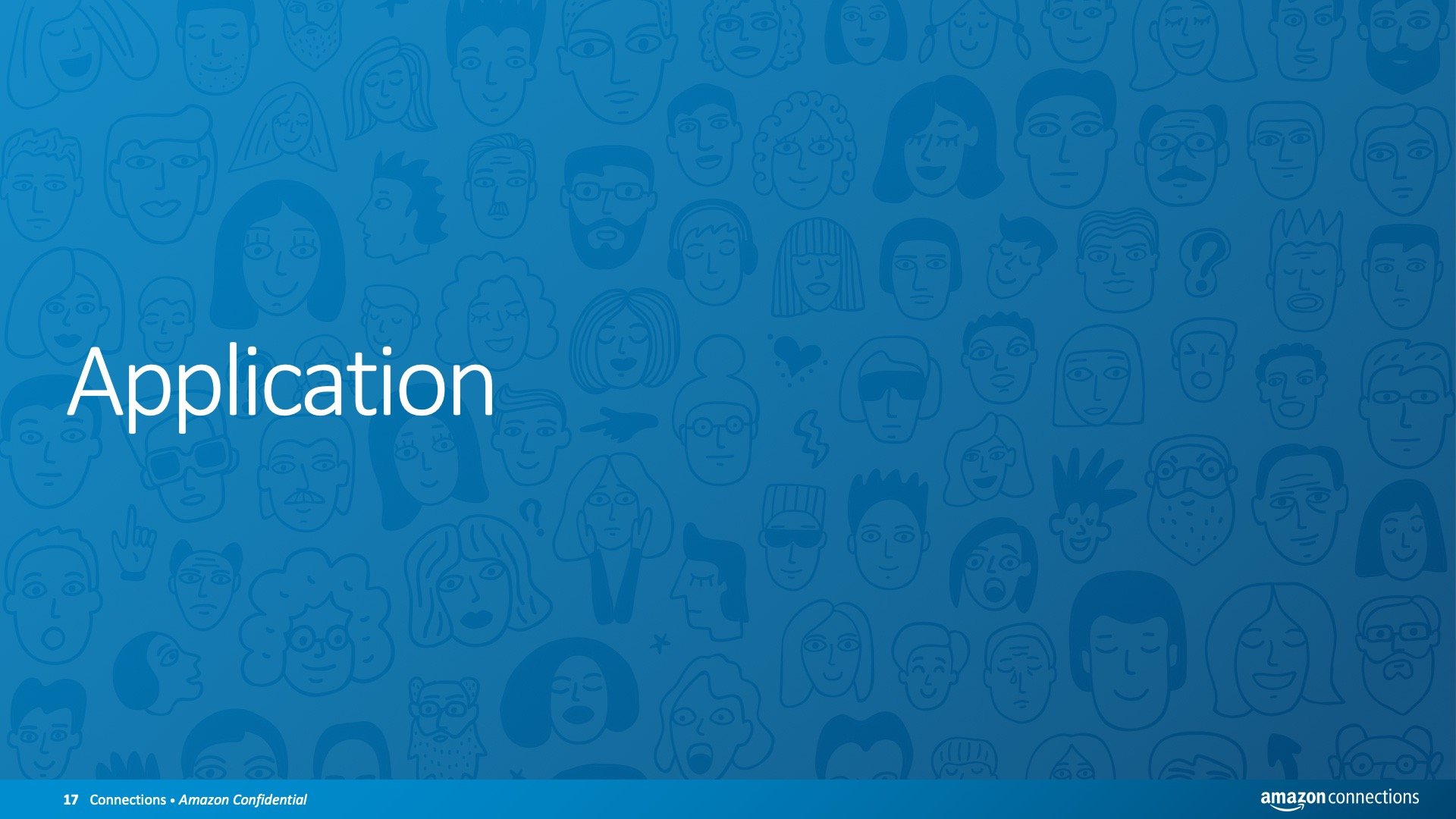
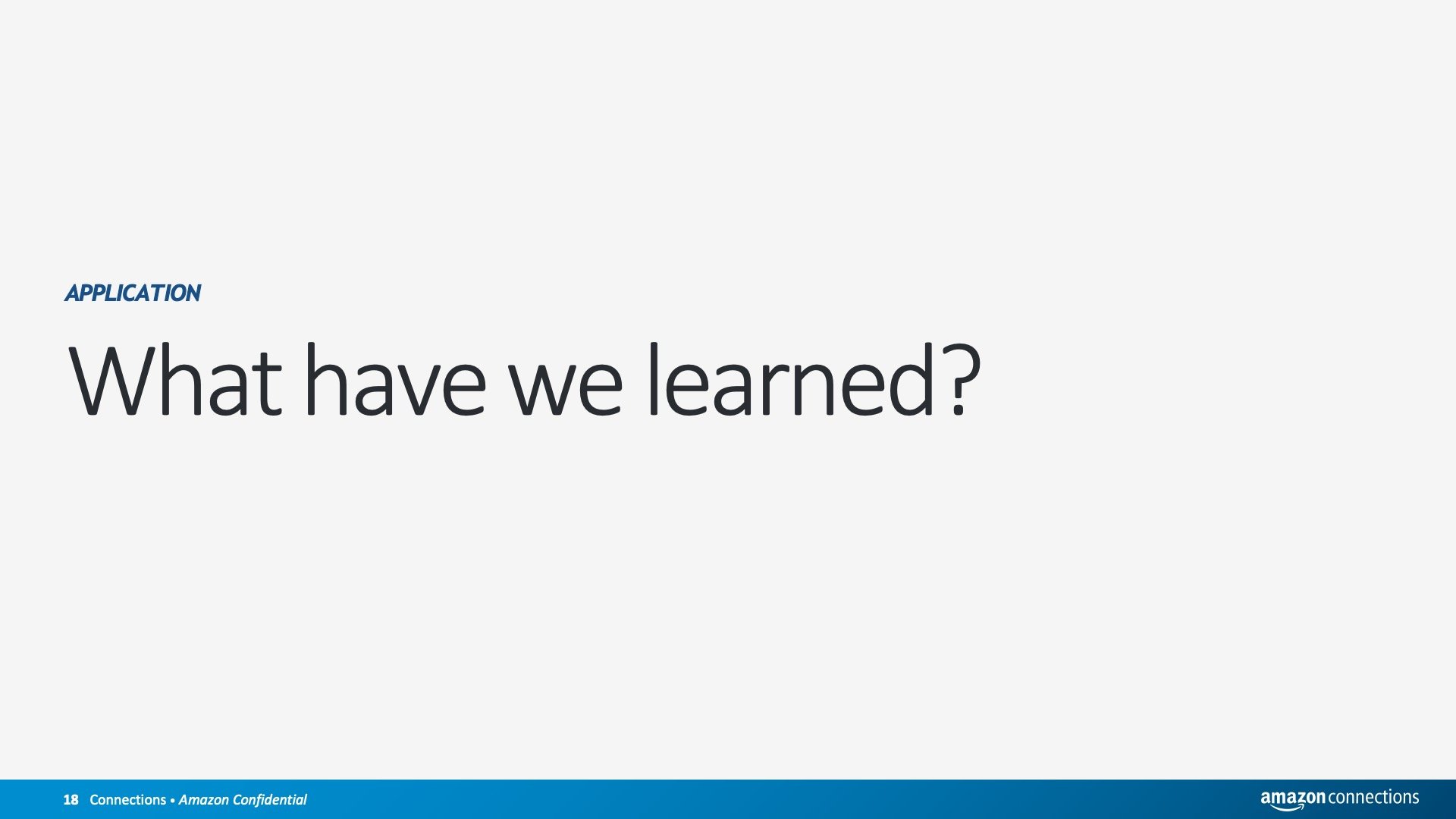

Qualitative interviews with employees revealed key themes from the initial population segments generated by the Connections data scientists.
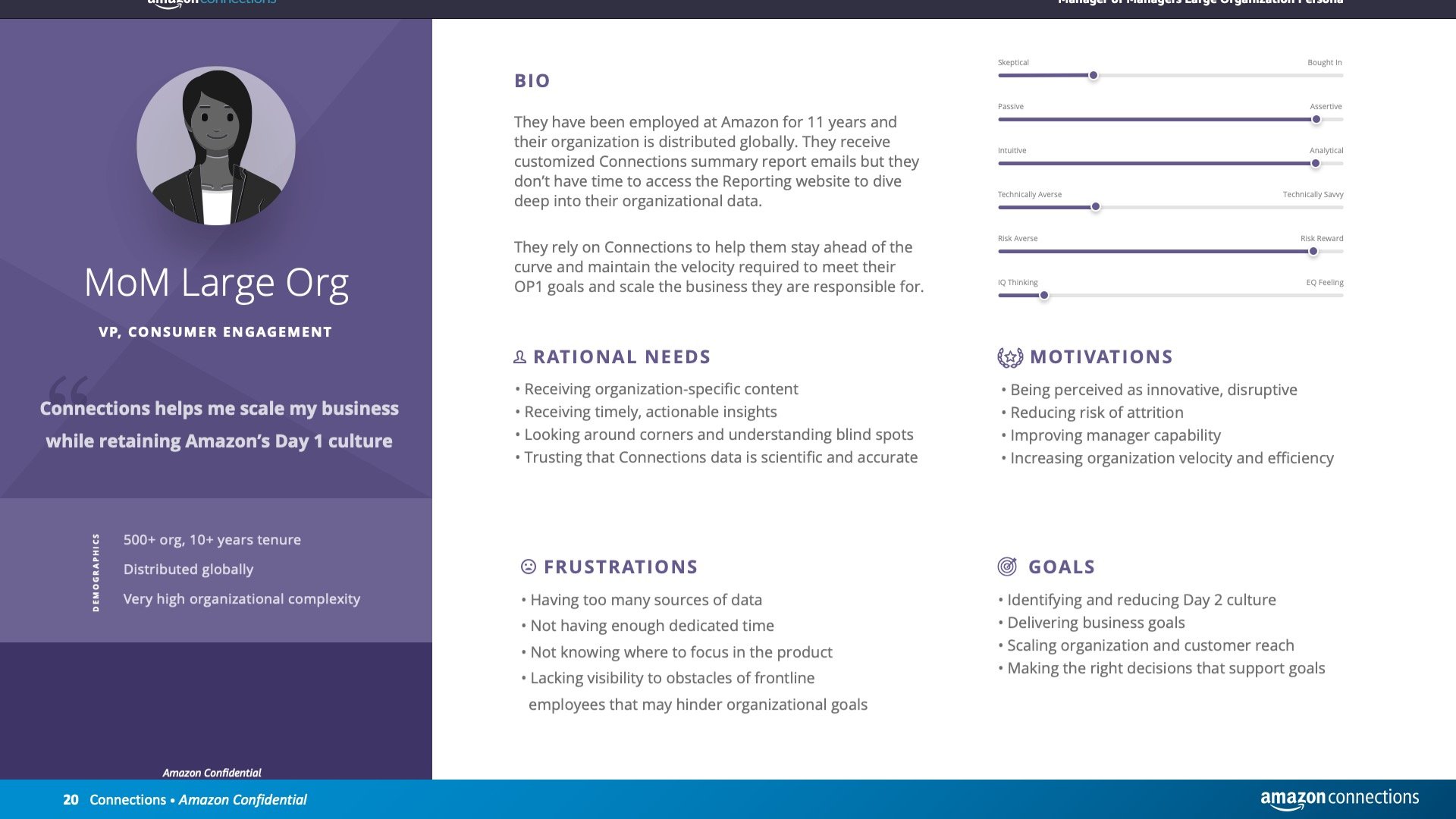
Manager of Manager’s Large Span of Control (501+) Persona
“I’m motivated to scale my business while maintaining Amazon’s Day 1 culture”.
Population size: 328
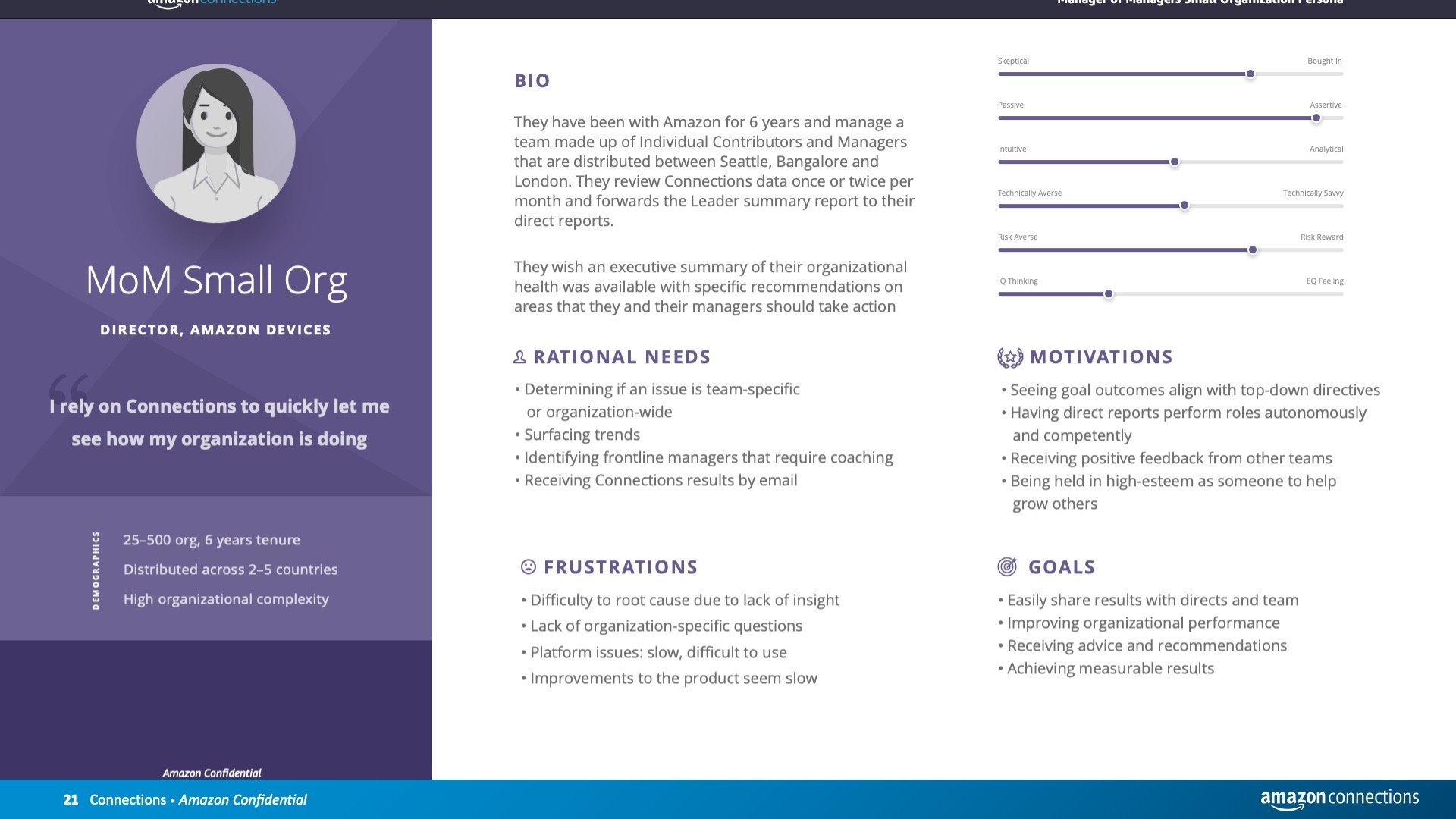
Manager of Manager’s Small Span of Control (26-500 people) Persona
“I’m motivated to be an inspirational leader by helping others and growing my business and its profitability. I need access to real-time results from Connections because I want to understand why my employees are responding the way they do”.
Population size: 4.7K

Frontline Manager Persona
Technical Manager: “I’m motivated by building a strong and successful team that is able to Think Big and problem solve. I want insights about my team’s health and how I compare to my technical peers. I’m frustrated that upper management focuses more on business metrics than builder culture for engineers”.
Population size: 7.1K
Non-technical Manager: “I’m motivated by having a clear vision/mission that supports our business goals. I want to make improvements on my team and take action from Connections results, but I don’t feel that I have the power to do so.”
Population size: 12.9K
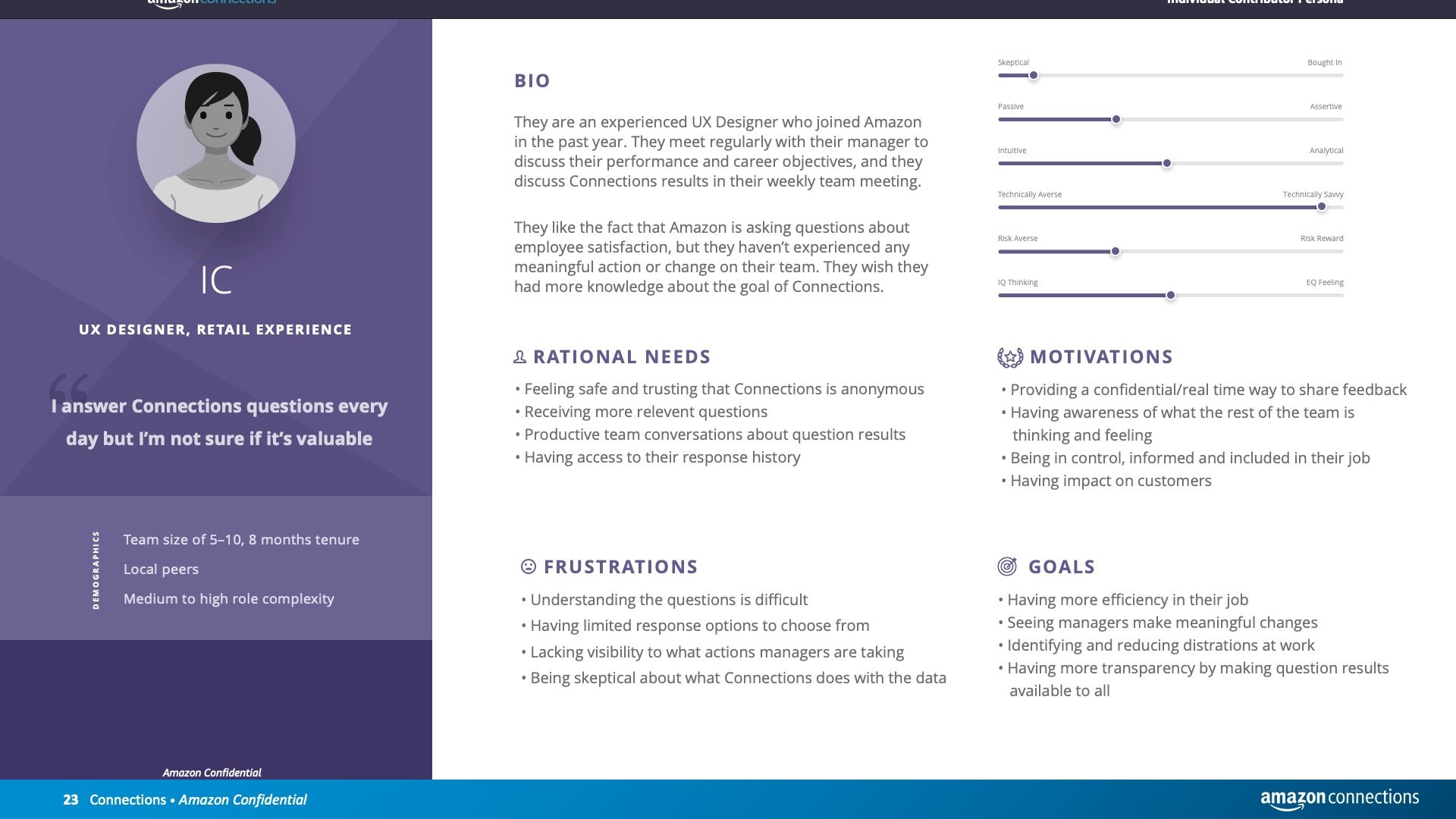
Individual Contributor Persona
Technical IC: “I’m motivated by challenging and meaningful work that gives me the opportunity to advance my career. I’m frustrated that Connections questions are not relevant to my technical role and team”.
Population size: 69.8K
Non-technical IC: “I’m motivated by helping others and doing work I find enjoyable. I participate in answering Connections questions honestly because I need my manager to know what’s working well and what’s not”.
Population size: 136.8K